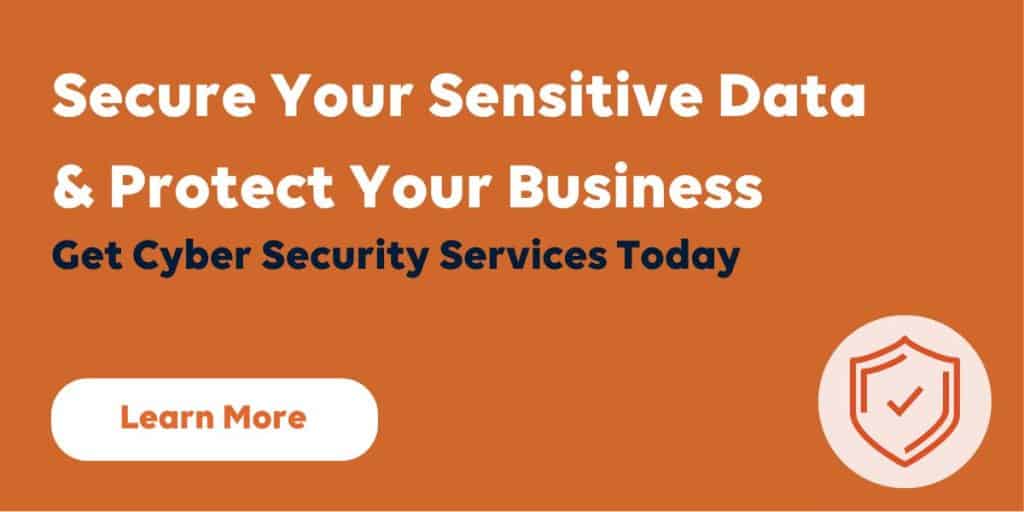10 Tips for Educating Employees About Cybersecurity
Cybercrime is an ever-increasing threat. As the world moves its data and money online, criminals have more opportunities than ever before. It’s a shift that businesses are taking seriously. Many Australian companies have implemented effective systems and software to prevent attacks from malicious actors. However, the biggest threat often originates from within the business.
According to a recent report, outside actors only account for about 65% of cybersecurity incidents. Internal actors – such as your employees and other people who have access to your data – now account for up to 35% of all incidents. Cybersecurity incidents are often the result of an accident or mishandling of data. But innocent mistakes can lead to substantial losses, with cybercrime costing the world nearly $10.5 trillion.
This outcome can be prevented. With training, education and the right systems, you can minimise the risk that employees present. We’ve put together 10 tips for educating employees about cybersecurity to protect your business and reduce your risk.
10 Tips for Educating Employees About Cyber Security
1. Create and communicate clear-cut IT security policies
An investment in cybersecurity technology and software does not guarantee that every threat will be stopped. While you may be able to prevent known threats from outside the business, employees are still a key vulnerability. It’s crucial to create clear-cut IT security policies and procedures. Your policies should govern things like:
- How, when and where company devices can be used
- How often software updates must be performed
- How to create and maintain secure passwords
- Rules around password sharing
- Handling of sensitive data
- Email security, including when email addresses can be shared
- Personal use of the Internet and social media on business networks
- What to do in the event of a cybersecurity breach
These policies must also be communicated to employees. For best results, they should align with your IT strategy, and should be drafted by your IT experts.
2. Test employee security knowledge
The best way to check if your staff is aware of scams and threats is to test them. Assessments are typically conducted in multiple parts:
- Knowledge check – Provide short quizzes or conduct question-and-answer sessions to find out whether your employees are aware of their responsibilities.
- Phishing tests – Phishing typically involves sending fraudulent emails that trick employees into providing sensitive information. It’s common to conduct phishing simulations to test whether your employees can spot a threat when it lands in their inbox.
- Behavioural audit – You can observe whether employees are complying with your policies and procedures. For instance, if employees often use their laptops on unsecured networks, this may be a clear indication that they’re unaware of company policy.
- Social engineering test – Social engineering is a common way for bad actors to obtain sensitive information. It’s possible to hire trained professionals to conduct social engineering simulations and test your employees’ response to the threat.
It’s also important to allow your employees to provide feedback. Overzealous cybersecurity policies can hinder day-to-day work and are unlikely to be followed. By allowing feedback, you can improve the way you manage cyber threats and improve the chances that your staff will buy-in to your policies.
3. Require complex passwords that must be changed regularly
We all know password best practice. No pets’ names, no childrens’ names, no birth dates. But are we implementing it? Weak passwords have been the cause of several major cyber attacks in recent years. Password vulnerabilities allowed hackers to access some of the world’s most secure networks, including GitHub and the Irish Parliament.
Best password practice involves creating complex passphrases that include:
- 12+ characters in lengths
- A mixture of upper and lower case letters
- Numbers
- Symbols
Secure passwords should only be changed if the account is compromised.
Contrary to popular belief, requiring employees to frequently change their passwords generally leads to lazy practices, which creates additional vulnerabilities. Using long, secure passphrases provides better protection and it ensures employees won’t adopt low-effort passwords.
4. Teach employees about Phishing scams
It’s human nature to be trusting, but phishing scams should be teaching us the opposite. A phishing scam is a type of fraudulent email that asks employees to provide sensitive data, such as their login details, bank information or client data.
The danger of a phishing scam is that these emails can appear 100% legitimate at first glance. In fact, phishing emails are so convincing that they accounted for about 36% of all data breaches in 2022. Train your employees to recognise and correctly respond to phishing.
5. Backup your crucial data
It’s impossible to stop every threat. Employees make mistakes and accidents happen, but these threats can still be incredibly damaging.
Having easily recoverable backups is the number one fallback if your business is hacked. If you already use backups, make sure they are tested and working at regular intervals.
It’s also a good idea to include backup procedures in your cybersecurity policy. Many employees now work on a remote or hybrid basis, which can mean that they don’t connect to the company network for weeks at a time.
Requiring employees to regularly connect to the network, update software and backup data is a simple way to protect your information.
6. Use email SPAM and internet web filters
Effective email spam and internet web filters are the easiest way to stop many of the threats reaching your staff. Installing email and web filters gives you greater control over how your staff use company networks. The degree of filtering depends on your individual risks.
For example, many businesses allow employees to use the internet freely. Small amounts of “cyberloafing” can actually boost employee productivity. However, employees also need to learn how to recognise the threat of viruses, scams, phishing and spam, and it’s often simpler to reduce the risk using filters.
The benefit of installing your own email and internet filters is that they offer excellent flexibility. You can respond to emerging threats, alter which sites users can or can’t visit, and update your policy and your business evolves.
7. Keep your systems patched with the latest security updates
Computer systems need security patches often, so make sure it’s being done frequently. One simple way to address this issue is to require employees to run updates once per week. For example, you could require all employees (including remote workers) to log in to the company network and update their devices at the end of each week.
That way, computers are always up to date, which protects against new threats as they emerge.
8. Protect your mobile devices
Mobile devices now contain as much critical business information as your desktop computers. But many businesses don’t protect themselves against loss or theft of devices. With so many staff working remotely, it’s more important than ever to train staff on how to handle smartphones, tablets, laptops and other devices.
Well-implemented security policies can decrease the risk of laptop theft by as much as 85%. That saves your business from the cost of replacing stolen devices, and it ensures your data is protected from thieves.
9. Keep your staff up to date with the latest cyber threat news
Staff are the last line of defence against cybersecurity threats. That means they need to be updated on the latest threats and scams so they know what to look out for. Consider distributing a regular newsletter, an email bulletin, or hosting a short meeting to brief your staff on any new threats.
10. Select a trusted IT partner like Surety IT
If you’re in any doubt about how to protect your business, talk to the professionals at Surety IT. Surety IT provides managed IT services that can minimise your vulnerability to cybersecurity threats. We provide documentation, policies, training and security solutions that keep your critical data safe from internal and external threats.
Employee training is a major part of our cybersecurity strategies. We teach your staff to identify and respond to threats, which can substantially reduce your risk.
Contact us to discuss our cyber security services and how we can develop a cybersecurity strategy to suit your business.
Further reading:
Why Good Cyber Security is a Positive for your Business





